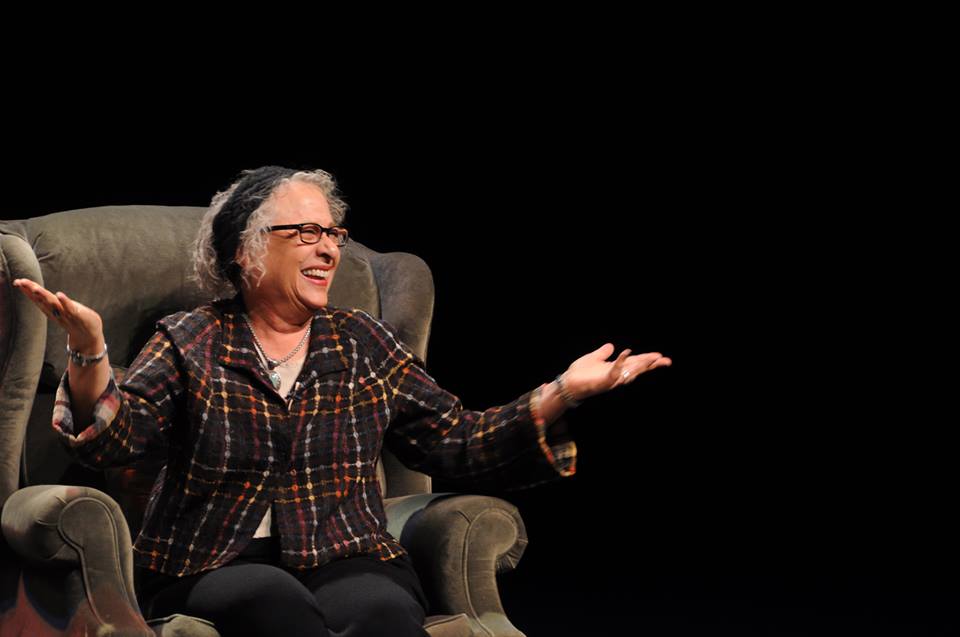Would You Rather be Serene or Fierce with Age? Welcome to the Conscious Aging Movement
 By author Carol Orsborn, Ph.D., Editor-in-Chief of www.Fierce with Age.com, the Digest of Boomer Wisdom, Inspiration and Spirituality
By author Carol Orsborn, Ph.D., Editor-in-Chief of www.Fierce with Age.com, the Digest of Boomer Wisdom, Inspiration and Spirituality
When addressing fulfillment of the human potential through all age and life stages, there’s a reason the experts talk in terms of “body, mind and spirit.”
Statistics regarding the positive impact of mental and physical health are well-documented. But what about the third leg of the stool, “spirit”?
Intuitively, as people age, their interest in spiritual issues and practices increases. A study by Albert Winesman (2003) finds that adults age 65 and older are more than twice as likely to see themselves as spiritually committed as individuals aged 45-54. But the enormity of benefits of spirituality on wellness and aging is the real headline news.
For instance, recent studies show that individuals who are able to maintain or establish new sources of spiritual comfort and strength later-in-life, receive such tangible benefits as reduced anxiety, improvement in recall through meditation and an enhanced ability to cope with pain and illness. Here are a few of the studies:
- Scholar Harold G. Koenig has done a thorough citation review showing the relationship between well-being, health and religiosity in later life. His findings demonstrate a robust inverse correlation between anxiety, suicide, depression and religion in older persons.
- A Stanford University-based 8-decade research study shows that for women, especially, on-going involvement with religion correlates to a longer, healthier life.

Few argue against the proposition that spirituality is an important component of successful aging. But just exactly what does “spirituality” mean? Serenity as a cultural ideal finds its roots in the years following World War II. When the young men returned home from the battlefield, something had to be done with the women and older folks who had been keeping the home front humming along. Madison Avenue, in cahoots with Washington D.C., mounted an epic public relations campaign to convince the masses that women who refused to go home to the suburbs and older folks who resisted trundling off to golf courses, fell somewhere on the scale between eccentric and unpatriotic.
This was a version of marginalization lauded as serenity but looking a lot more like complacency, detachment and disempowerment. The “Greatest Generation” by and large adopted this version of a serene old age as the ideal. But an increasing number of the Boomer generation–their aging children– simply aren’t buying it. In fact, many of us are awakening to the possibility that the busting of the serenity myth is not simply a personal trial, but rather, our generation’s next great revolution.
This overthrowing of an old paradigm even has a name: it’s called Conscious Aging.
 Conscious Aging is less concerned with the achievement of serenity, and more focused on being “fully alive.” The opposite of complacency or passivity, conscious aging involves the hard work of breaking denial to embrace both the shadow and light of aging and mortality. Awakening often comes bundled with the humbling realization of how much of our sense of mastery over our fates had always been limited. We are forced to confront our fears.
Conscious Aging is less concerned with the achievement of serenity, and more focused on being “fully alive.” The opposite of complacency or passivity, conscious aging involves the hard work of breaking denial to embrace both the shadow and light of aging and mortality. Awakening often comes bundled with the humbling realization of how much of our sense of mastery over our fates had always been limited. We are forced to confront our fears.
When viewed through the lens of Conscious Aging, this is a good thing, Virtually every spiritual and religious philosophy centers on the shattering of illusions—be it the Hebrews tearing down of false idols or the Buddhists seeing through the Maya of surface manifestation. When we strip away the impositions, the fantasies and the denial, we begin to view aging as holding the potential for activation of new, unprecedented levels of self-affirmation, meaning, and spiritual growth.
While Conscious Aging is deeply personal, it bears implications for society at large. According to scholar and gerontologist H.R. Moody: Conscious Aging has emerged as a new cultural ideal at a specific moment in history representing “ a genuinely new stage and level of psychological functioning… The evolution of psychology toward a deeper view of the human person can now join with the societal transformation of institutions to create new opportunities for positive development in later life.”
Mystics of many traditions speak to the loneliness of facing the cosmic mystery with which we are increasingly confronted as we age. However, there are many of us in the Boomer generation who have been preparing ourselves for this moment all of our lives. An example of this is the Conscious Aging Alliance —and all of the individuals and groups I have encountered in my role as editor-in-chief of FierceWithAge,: the Digest of Boomer Wisdom, Inspiration and Spirituality—who represent the rapid approach of a tipping point for societal attitudes and approaches to aging.
Conscious Aging is not for everybody. But for those of us who have found serenity to be overrated, it is an exciting time, indeed, to be growing old.
 Carol Orsborn, Ph.D. is Founder of FierceWithAge, the Digest of Boomer Wisdom, Inspiration and Spirituality. Free subscriptions to the monthly Digest are available at www.FierceWithAge.com. Dr. Orsborn is the best-selling author of 21 books including her newest book: Fierce with Age: Chasing God and Squirrels in Brooklyn. (Spring 2013) She is an internationally-known thought leader specializing in issues related to Boomer women, spirituality, adult development and quality of life. With a doctorate in the History and Critical of Religion from Vanderbilt, Dr. Orsborn is a sought after speaker/retreat leader on resilience, aging and marketing to Boomers.
Carol Orsborn, Ph.D. is Founder of FierceWithAge, the Digest of Boomer Wisdom, Inspiration and Spirituality. Free subscriptions to the monthly Digest are available at www.FierceWithAge.com. Dr. Orsborn is the best-selling author of 21 books including her newest book: Fierce with Age: Chasing God and Squirrels in Brooklyn. (Spring 2013) She is an internationally-known thought leader specializing in issues related to Boomer women, spirituality, adult development and quality of life. With a doctorate in the History and Critical of Religion from Vanderbilt, Dr. Orsborn is a sought after speaker/retreat leader on resilience, aging and marketing to Boomers.